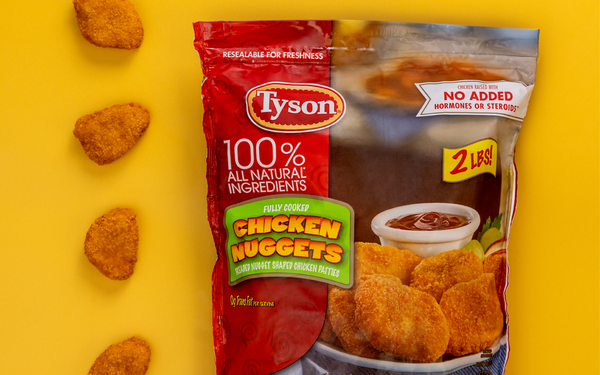
SNAP shoppers are
already cutting back on protein.
After months of political wrangling, the impact of sweeping cuts to the Supplemental Nutrition Assistance Program is starting to
crystallize — and the fallout is severe. For 22.3 million American households, the reductions will mean smaller benefits or a total loss of support. And while the human toll is staggering,
brands and retailers are also beginning to tally the damage.
Walmart is the most exposed, according to a new analysis from Numerator, capturing 24% of all SNAP spending. Circana data
highlights the risk to dollar stores, where 30% of sales come from SNAP households. Together, those losses could reshape the shopping landscape.
CPG brands are especially vulnerable. Post
Holdings tops the list, with 10.6% of its shopping trips made with SNAP dollars. Tyson follows at 8.4%, then Conagra (7.5%), Kraft Heinz (7.3%), and General Mills (7.2%). Frito-Lay, J.M. Smucker,
Nestlé, and Kellanova are also heavily represented in SNAP households’ baskets.
advertisement
advertisement
These cuts arrive at a time when many shoppers are already struggling. Numerator finds that 86% of
SNAP recipients say their benefits run out before the end of the month. Some 63% express serious concern about their finances, and 68% now say SNAP “somewhat” or “barely” meets
their nutritional needs — a five-point increase from 2022. A growing number report cutting back on essentials, with 31% buying less meat or protein and 24% reducing fresh produce purchases.
States are also changing the rules. Six — Arkansas, Idaho, Indiana, Iowa, Nebraska, and Utah — have secured waivers to limit which items can be purchased with SNAP dollars, typically
targeting soda, candy, snacks, and low-juice beverages. Seven more states are considering similar restrictions.
“These at-risk categories will need to prepare for continued SNAP shopper
shifts,” writes Sally Lyons Wyatt, global executive vice president and Circana’s chief advisor for consumer goods and foodservice insights. “These shifts could range from SNAP
shoppers buying the categories less often to not buying at all in the SNAP-waiver states. On the flip side, products outside of the state waivers could benefit, as SNAP shoppers reallocate funds to
approved items.”
Overall, SNAP shoppers account for roughly 20% of CPG sales. They shop more frequently and buy more items per trip than other consumers — meaning even modest
behavioral changes could ripple widely.
But the consequences won’t be limited to balance sheets. A recent analysis from the University of Pennsylvania School of Medicine, presented to
Congress ahead of the SNAP cuts, projects that among the 3.2 million people under age 65 expected to lose all food assistance, the result will be 93,000 premature deaths over the next 15 years.